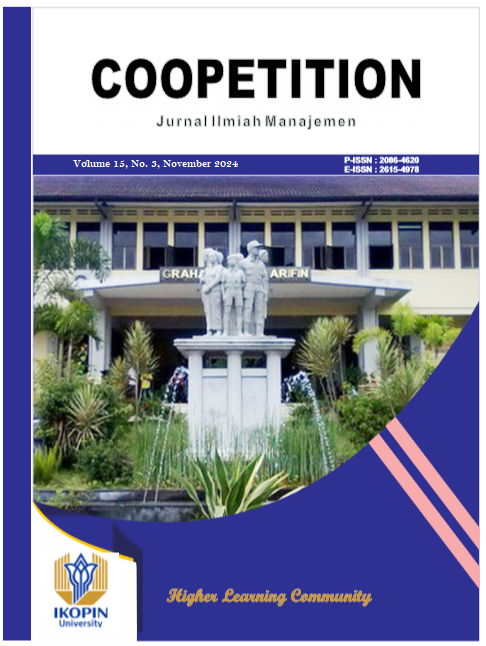Optimasi Pengendalian Kualitas Produk Usaha Yang Dimiliki Oleh Koperasi Melalui Pendekatan Metode Six Sigma
DOI:
https://doi.org/10.32670/coopetition.v15i3.4649Keywords:
Kualitas, Metode Six Sigma, DMAIC.Abstract
The right product and service quality according to consumer preferences plays a crucial role in determining the success of a company. Therefore, a deep understanding of consumers, their needs, and the expectations that must be met is an important aspect for an organization. In order to maximize quality improvement efforts, the Six Sigma method is an inseparable key element. This method has been proven effective in optimizing product and process quality, with a positive impact on reducing defect rates that negatively impact company performance. Through a structured and measurable approach, Six Sigma is able to direct companies towards sustainable development. The Six Sigma method includes a series of steps known as DMAIC, namely Define - Measure - Analyze - Improve and Control. Through the Definition stage, companies identify problems or opportunities for improvement explicitly and map out the project framework. The Measurement step refers to collecting relevant data to analyze the initial situation, while the Analysis stage is used to analyze data in depth to identify the root cause of the problem. After that, the Improvement stage is carried out by designing and testing appropriate solutions to address the identified problems. Finally, the Control step ensures that the changes implemented are maintained and sustained for the long term.
Downloads
References
Ahyari, M. (1990). Pengendalian Kualitas dan Produktivitas. Bandung: Penerbit Alfabeta.
Ahyari, S. (1990). Pengendalian Kualitas: Teori dan Aplikasi. Bumi Aksara.
Assuari, J. (1980). Pengendalian Kualitas: Konsep dan Aplikasi. Jakarta: Penerbit Erlangga.
Bissell, P. (1990). Managing the New Product Development Process. International Journal of Production Economics, 20(2), 139-152.
Brue, G. (2002). Six Sigma for Managers. McGraw-Hill.
Crosby, P. B. (1979). Quality Is Free: The Art of Making Quality Certain. McGraw-Hill.
Deming, W. E. (1982). Out of the Crisis. Massachusetts Institute of Technology, Center for Advanced Educational Services.
Elliot, D. (1993). Quality and Business Excellence: Concepts, Strategies, and Practices. Routledge.
Feigenbaum, A. V. (1991). Total Quality Control. McGraw-Hill.
Gaspersz, V. (2002). Pedoman Implementasi Program Six Sigma. Gramedia Pustaka Utama.
Geoetch, J. A., & Davis, J. S. (1995). Managing for Quality: A Practical Guide. Prentice Hall.
ISO 8402 (1994). Quality Management and Quality Assurance – Vocabulary. International Organization for Standardization.
Juran, J. M. (1962). Quality Control Handbook. McGraw-Hill.
Pande, P. S., Neuman, R. P., & Cavanagh, R. R. (2000). The Six Sigma Way. Penerbit ANDI.
Peter, J. P., & Olson, J. C. (2000). Consumer Behavior and Marketing Action. Thomson Learning.
Reksohadiprojo, S., & Sudarmo, H. (1985). Pengendalian Kualitas: Konsep dan Praktik. Gadjah Mada University Press.
Scherkenbach, W. W. (1991). The Deming Route to Quality and Productivity: Lessons from the Best. ASQC Quality Press.
Standar Nasional Indonesia (SNI 19-8402-1991). Sistem Manajemen Mutu – Terminologi. Badan Standardisasi Nasional.
Downloads
Published
How to Cite
Issue
Section
License
Copyright (c) 2024 Coopetition : Jurnal Ilmiah Manajemen

This work is licensed under a Creative Commons Attribution 4.0 International License.


















